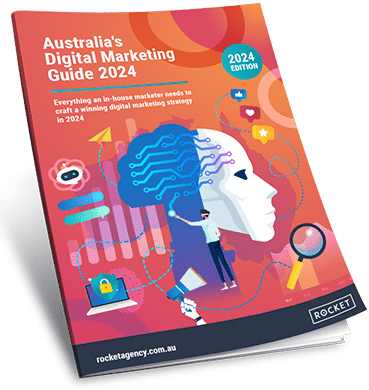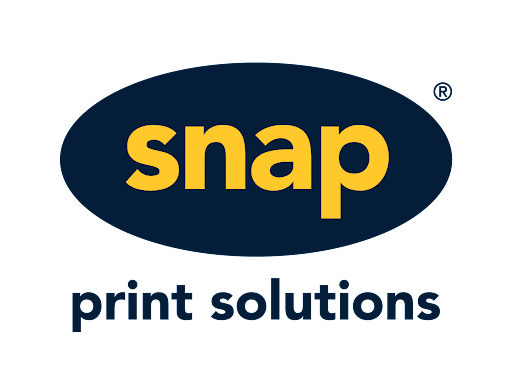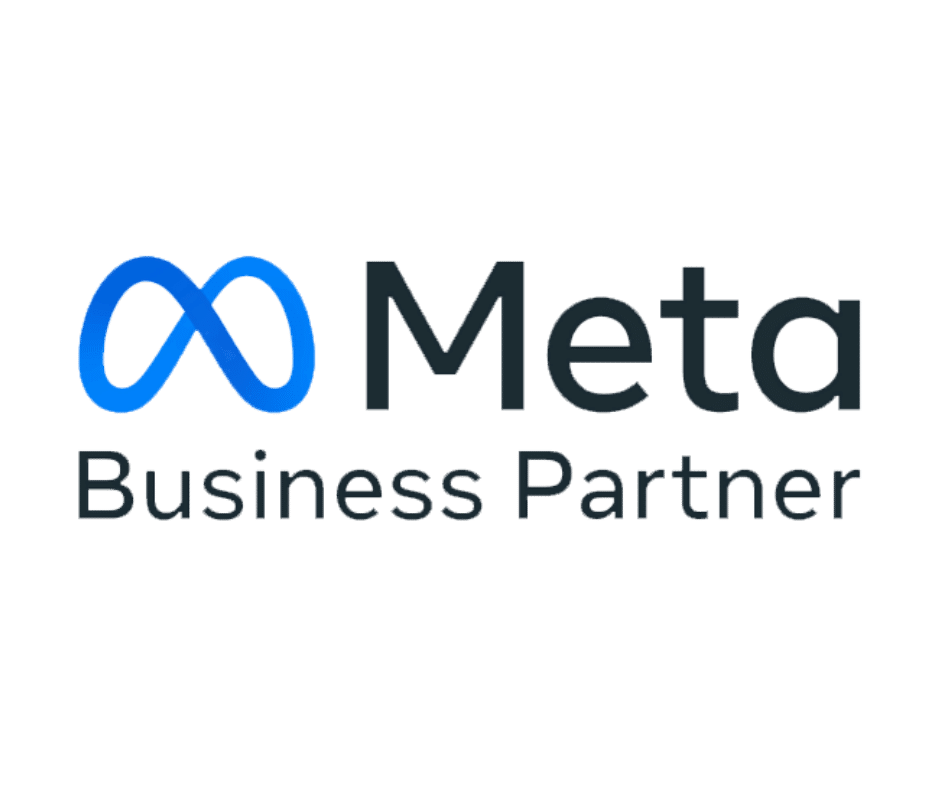Strategy… the Most Misunderstood Word in Marketing? With Ashton Bishop
Episode Description:
"Strategy" is often the most misunderstood and overused word in the marketing industry. In this episode, Ashton Bishop tells you exactly what strategy is, why you need it, and how to create an effective marketing strategy for your business!
Key Takeaways:
- What does "strategy" actual mean?
- When do you need to develop a new strategy?
- Advice on how to balance marketing strategy vs busines strategy.
- The 4 reasons why doing SWOT is not creating an effective strategy.
Featuring:

Ashton Bishop
About the Guest:
With over 20 years of marketing and strategy expertise — Step Change CEO Ashton Bishop has helped create billions’ worth of new value for some of Australia’s and the world’s most successful brands. As an award-winning speaker and coach, and a true master of strategy and creativity, he takes insights from the playing field and transforms them into accessible and scalable tools for growth to inspire step changes in businesses and teams, and turn every ‘how’ into a ‘wow’.
Follow him on LinkedIn and on Instagram [@atstepchange; @instituteofchange], or visit his website.
Podcast Summary: Strategy - The Most Misunderstood Word In Marketing
Award-winning speaker and CEO of Step Change, Ashton Bishop, shares how to create an effective marketing strategy for your business.
Most businesses struggle with creating a marketing strategy. Either they have one that is not actionable, relevant, or generating real results, or they don’t have a strategy at all.
As marketers, we have scarce, limited resources; time, dollars and focus. Creating a marketing strategy gives us the choice of ‘where’ and ‘how’ we are going to apply these resources to achieve maximum leverage, and ultimately generate revenue for the business.
Importantly, a good strategy arises out of context. This means that the team agrees on the current position in the market, the pressing opportunities and challenges, and a key problem they are trying to overcome. Then, they make a diagnosis, set clear objectives, and invest in activities to achieve those results.
Common Flaws of a Marketing Strategy
The problem for many businesses is that instead of creating a thorough and relevant marketing strategy that will allow them to reap the benefits from their marketing efforts, instead, they might do one of the following:
- ‘Every Child Wins a Prize’: There’s no real plan here. Instead, businesses try and play in too many spaces and give away multiple offers to customers.
- ‘Cherry on a Mud Pie’: In this instance, the business ignores the core problems that they’re facing, and continues to spend money on campaigns that won’t drive real results.
- Objectives Masquerading as Strategy: Businesses set goals they want to achieve and mindlessly play towards achieving them without any real plan, budget, or strategy backing it.
If you’re doing SWOT, you’re not actually doing strategy
Much like creating a strategy, completing a SWOT analysis is another overused and misunderstood term for marketers. While there are many benefits to highlighting and analysing the strengths, weaknesses, opportunities and threats to a business, completing a SWOT analysis does not automatically equate to a strategy. There are four key reasons for this:
- SWOT has become a cliché: Most businesses simply take last year’s SWOT analysis and ask one of the junior marketers to update it without fully understanding the context of the business, the market or the industry.
- You use generic keywords: It’s common when reading a SWOT analysis to find simple terms like ‘technology’ or ‘new products’. This too general and isn’t accurately analysing the market or your position as a business. You need to ask specific, pointed and challenging questions.
- It’s too long: Many SWOTs are too long and include pages and pages of irrelevant information.
- You’re missing a time-critical lens: The further in advance someone predicts or projects, the less accurate those predictions are. 1000 days is pretty much the longest timeline you would imagine having confidence. For longer-term plans, you want to be planning 3 years maximum.
Read: Competitor research: 5 steps to being the best marketer in your industry
The concept of ‘First Horizon v Second Horizon’
When applying a time-critical lens, it’s important to consider whether you’re developing a strategy for the short-term v long-term. If you are looking at short-term, performance-based goals then you should be considering what’s referred to as the ‘First Horizon’, whereas brand-building/top-of-funnel marketing activities fall under the ‘Second Horizon’.
To apply the First Horizon v Second Horizon approach effectively, you not only need to be critical of what you’re saying yes to, but moren so, what you’re saying ‘no’ to. You’re not only making decisions based on the short-term, six months sales, you are setting up your business for longevity and sustainability in the months and years ahead.
Before you create a new strategy it’s vital to review your current one
You will probably be surprised at how many gaps and weaknesses you’ll find in your activities, or even objectives, when you review both your past and current strategy. This is especially the case if you haven’t been able to hit certain metrics for an extended period of time. You’re likely to find that budget is being wasted in a particular channel. A campaign or tactic that has worked extremely well in the past might not be driving the same results in the present.
Using data is the most effective way to support this decision-making process. How effectively are you tracking your campaigns? Are you recording results and comparing MoM and YoY data to get an accurate understanding of performance?
Turn a strategy document into an actual plan
This is where most businesses get stuck - they put hours of energy and resources into creating a single document entitled ‘strategy’, and then it sits untouched collecting dust. The goal should not be to deliver a single document. Setting SMART objectives within your strategy means you have a dynamic, time sensitive, measurable plan that you need to put into action.
The magic comes from putting your strategy into an automation or project management platform; assigning responsibilities for each task, and due dates for when they need to be completed by; determining the cost and hours of each activity; reviewing the actions regularly against set metrics for regular optimisations and improvements. This allows you to not only track your progress, but is vital in catching potential problems or roadblocks as they arise, and not in another 6 months time when it’s too late to make changes.
The metrics that matter
Vanity metrics are not going to deliver your end goal; which is always to generate revenue.
While it’s awesome if your website traffic has increased, if there isn’t a growth in conversions or sales, then there’s clearly a gap that needs to be fixed.
Two key metrics that every business should be measuring include:
- Cost to acquire a customer
- Customer lifetime value
As both a marketer and business person, your ultimate goal is to lower the cost to acquire while increasing the customer lifetime value. A business that is able to do both of these things well, is a healthy business.
Read: The Australian Digital Marketing Strategy Guide 2023.
Your job, at the end of the day, is to serve the customer. As a marketer, it is your responsibility to convince your customer that your product or service is the best solution to the problem they are facing.
If you need help with your digital marketing strategy or campaign, contact the experts at Rocket. Let's work together to take your business to the next level!
Transcript
James Lawrence: Welcome back to the Smarter Marketer podcast. Today I have the pleasure of hosting on the pod Ashton Bishop. Ashton, welcome.
Ashton Bishop: Thanks, James. Ashton is CEO at the Institute of Change since November 2020. He's also CEO at Step Change for the past five years, which is one of Australia's highest regarded strategy consultancies. In his time, Step Change have worked with large brands like Primo, Pizza Hut, AGL, Mercer, but also a raft of smaller and midsized businesses, which I think is really interesting to get a kind of a perspective on a broader range of businesses. He's also been a Marketing Academy mentor for the past five years. I like this one. And I've seen Ashton speak. He's a three time winner of ‘Speaker of the Year’ at one of the world's number one CEO networks. You are very good when you're in full flat, Ashton, which I hope we get a little bit off today. And the thing that I like the most is that he's pumping his wings up. I think you've got the strategy, you've got the theory side of things, but you've actually been responsible for the rubber hitting the road, overseeing million dollar campaigns that have hit the market, creating billions of dollars of sales and revenue for businesses for some of Australia's biggest brands. So, Ashton, welcome to the pod. Today we're going to be discussing strategy. I'm looking forward to it. I'm going to give you maybe it's the easiest question or maybe it's the hardest question to start with. What is strategy?
Ashton Bishop: Yes. So what is strategy? When I answer that question with a question. Which is, why do we need strategy? And if we get the answer to why do we need it, then we get a much better answer to what strategy is. And most organisations don't do strategy. They do like business planning. And they sit there and they take last year's numbers and fiddle them by 5%-7% and call it a strategic plan. And that doesn't work. And the reason that doesn't work is we don't understand why we need strategy. And we need strategy because we have scarce, limited resources. What are the resource limitations that every organisation pushes up against? Time, dollars and focus. At some point, it doesn't matter who we are, we run out of time, dollars and focus. And because those limited resources are scarce, we then need strategy. So what strategy? Strategy is a choice of the ‘where’ and the ‘how’ to apply those scarce resources for maximum leverage. Now, that's easier to say and it's hard to do. And it requires the key part of strategy, which is choice. So if we have a ‘how’ and we have a ‘choice’, then we're probably in the world of strategy. And it arises when we can be less myopic than our competitors. It arises when we're prepared to say no to something. And it arises when we can focus in on that critical point.
James Lawrence: Love it. Love it. That's awesome. What are the best businesses doing that are using strategy effectively versus the symptoms of organisations that are just not doing it?
Ashton Bishop: So what makes good versus bad?
James Lawrence: Strategy or nonexistent strategy, I guess.
Ashton Bishop: Yes. So, as we said, a lot of businesses don't actually do strategy, but they pretend that they do. They have strategic planning sessions and strategic steering committees and people with strategy in their titles, yet they actually haven't gone back and says, why do we need strategy? What is it? So they start doing other things. So what do they do? They do business plannings and optimisations. They do ‘Every Child Wins a Prize’ where they go, ‘you can have this and you can have that’, and we'll just get a showbag full of stuff and see what happens. Right?
James Lawrence: Yeah.
Ashton Bishop: The other thing that they sometimes do is what we call ‘cherry on a mud pie’, where they just ignore what's happened and they put the shiny thing on and it still tastes rubbish. Or they do; somebody's been to Anthony Robbins and they go, ‘our strategy is to try harder and smash the competition’. Because right now I love Robbins and there's a time for focused application of will. But it's that old conundrum. It's culture for breakfast. Like what nonsense, right? If you've got a great culture but you don't know what you're doing, you'll all run off a cliff together. I don't know if you've seen the We Crash debacle, but that's an example of a really inspired culture that didn't have a sound strategy underneath and they ran straight off a cliff. Or if you don't have a culture and you've got a great strategic plan, it ends up in the bottom drawer rather than the bottom line.
Ashton Bishop: Other strategy flaws are objective masquerading as strategy. I've had business owners literally sit down with me and say, we don't need this strategy stuff. I've got a strategy. We're going to double our business over the next twelve months. That's not a strategy. It's an objective. So what does good strategy do? It arises out of context, so we know where we are, we know what are the forces we're looking for, the opportunities and challenges. Then it makes a diagnosis, then it sets objectives, and then it makes choices. So back to your question. What does a good strategy look like? We've looked at the context. We understand the opportunities and challenges that are time critical. We've made a diagnosis so we know what's going on, and then we start to make coordinated, cascading choices.
James Lawrence: It's the how.
Ashton Bishop: Yeah, brilliant. James, in a word, it's the how. And, you know, whether you've got a strategy or not, whether you've got a clear how this made choice, I think I suspect we'll have a similar perspective on this, which is the audience on this pod are marketers, Australian marketers. What I find is that everyone's a marketer, everyone's got an opinion, and there's almost infinite choice in terms of whether you've got a marketing budget. You may or may not have some targets or objectives. Is it above the line? Is it below the line? Is it digital? Is it offline? If it's digital, is that Google? Is it Facebook? Is it Instagram? Every non-marketer in an organisation has the right idea of what we should be doing to drive success. I kind of feel that in many ways, marketing is the ultimate area where you've got infinite choice as to how to get somewhere. And therefore, if strategy is the how, there's probably no area that needs a strategy more than marketing.
James Lawrence: Maybe just talk about what works with marketing planning. And the thing that I'm interested it in is for you to talk about the intersection of business strategy, overall business direction, and where marketing drops into that. I think often at Rocket, we're a digital agency, so we're probably we're driving business; goals, revenue, sales, etc. But often we're doing it at a more tactical level within Google or within social. But I think where you're operating is probably a little bit at that intersection of business strategy… marketing strategy. How do the two relate and what are generally the things that work?
Ashton Bishop: Yeah, and it's such a great question, James, its actually how we arrived at business strategy. And we do the business strategy for some ASX and international blue chips. We've flown all around the world doing business strategy, but we started in value proposition journey, which we got really great at that. But it's actually a rubbish business model because you've become very, very good at a value proposition. People go, that was so good. I'm calling clients up four years later and going, you know, that testimonial they gave us and said, that was the best day we ever spent on our business. Maybe we should spend another day like that. Are you kidding? That value proposition is rock solid. We're just taking that to market and leveraging it. So doing value propositions isn't a great business model.
Ashton Bishop: So then we did marketing planning and what we found very quickly, that it's very, very hard to do marketing planning without an understanding of a proper business strategy, because we don't know what we're delivering on, we don't know the objectives. And I like your point there around infinite choices. Maybe not infinite, but the last time we did account on media, there was something like 543 different media channels and options to buy. And which one's right? It comes back to your objective. So, look, when it comes to strategies in marketing, we have a very particular way that we go about it. Yes, you must do a context scan, right? And what people get, and one of the hardest messages often deliver to business owners is that if you're doing a SWOT, you're not doing strategy right and people don't like that, and they get quite affronted and there's quite a jar. But the answer to that is very simple, is that most opportunities and challenges are time critical. A SWOT misses a time critical lens. So that's the truth of it. And sometimes the truth is in always appealing. But you must start by really understanding what are the opportunities and challenges because most of what it seems like is actually great timing. We can't underestimate or undercook the importance of opportunities and challenges.
James Lawrence: Can you unpack that a little bit in terms of a swat not being time talk about that?
Ashton Bishop: Absolutely. Well there's actually sort of five reasons why if you're using a SWOT, you're not doing strategy. Now, the first thing is a SWOT has become almost like a cliche and how do businesses do it? They grab last year's SWOT, they get one of the junior team members and say ‘can you go and update the SWOT?’ And they go to update the SWOT, not to understand the context. And like all things in life, it's intention that's critical. And if you go to update a SWOT but you don't understand that you're looking to understand context, what do you do? You put opportunities, threats, technology, so it becomes a nonsense.
Ashton Bishop: The second thing is you get generic words, so you get words like technology and what does that mean? It doesn't mean anything, so it's not specific enough and it doesn't ask very pointed, challenging questions. Now the other thing about a SWOT is that sometimes, I've seen SWOTs that are 15 pages. What do you have when you have 15 pages? You've got basically a showbag full of stuff, right? You don't know which way is up. But the most important thing that I mentioned about a SWOT is it doesn't have a time critical lens. Now, we work a lot with futurists, and when it comes to futurists, there was a study done by a guy called Tetlock and he looked at something like 82,000 predictions and he got thought leaders and experts and he asked him to make predictions about the future. And effectively, if you take a thought leader or an expert and you project them out, after you get past about twelve months (so short term they're very valuable. Three to six months see an expert over a twelve month period)... Over a 12 month period, an expert is slightly less accurate than a chimp tossing a coin. And the reason for that is ego and hubris and they get stark, right?
Ashton Bishop: So the further out it goes, the less we can accurately predict. So when we're at the futurist, we say a thousand days is basically the longest timeline that you would imagine really having confidence. Because with any fact or attribute we're saying, well, how likely is this to hit? If it hits, what's going to be its impact? So we're looking at the strategic significance, the materiality and the commerciality of it. So as we go through and we start to wait things, the longer it goes, the less accurate it is. So we built this tool called a strategic rate. And we say, look, the action zones within a thousand days. What can we do now? If it's going to hit within a thousand days, let's act now. Let's get the brief in now. Let's start testing it now. It's our action zone.
Ashton Bishop: Three to five years. We call that no man's land. Right? Why? Because it's less easier to say something's going to hit in that. Now if you work in capital or industry, of course you need to to plan in that. If you're in a service business, if you're in a much more agile industry, pull it out of no man's land and either put it in the thousand day action zone or push it out to the seven to ten years. If you look at when Jobs returned to Apple, what did he do? Slice the range by 70% to 80%, right, got very, got out of printers, got out of service, got very clear on the now and then started to resource for the i-revolution, right? The iphone, the ipod, it was just internet right. He could see the connectedness coming and he prepared the resources for that. So that's what we need.
Ashton Bishop: That's a looser vision as to, you know, five to ten years, this is where we want to be. But in terms of anything practical to move us towards that we're looking within three years kind of thing and that's exactly the right way to think about it. James, what can we do now and then what are the eyes on the future and all strategy that's effective should be two speed; and that goes for business strategy and it goes for marketing strategy. And what does that mean? It means you've got the first horizon which is optimise and crystallize value. So we should be always looking in any strategic planning cycle and even though we plan for 1000 days, we don't then sit on our hands. We do 1000 day plan with quarterly reviews. The annual planning cycle is such nonsense because it assumes that the twelve months nothing's going to change.
Ashton Bishop: And the biggest screw ups in business and political and marketing history is not stupid people doing stupid things. It's applying a previously sound concept to a changed context. You look at that time and time again, it wasn't dumb people doing dumb things. It was taking a strategy from the past and not realising that things had changed.
James Lawrence: First horizon, short term. Second horizon being that Steve Jobs vision into the I revolution type thing?
Ashton Bishop: Yeah. So horizon one is how do we optimise for today and either extract greater efficiency or deliver/extract more value? And that fuels horizon two. And horizon two says, what is value going to look like in the future? And what are the capabilities or the innovations that we need to develop now to equip for horizon two? And that's the two speed. And if you look in a marketing context, probably the gold standard in effectiveness is the work from Field and Burnett. And they talk about the conversion of short term opportunities as being that sort of six month window. And if you go on activation, you will see it go up, you stop and they drop off. So over that six month window, if you're going to activate with your tactical ads conversion based stuff, that will work, but you turn it off and it stops. So that's offers and activations and crystallisation, if you're looking at how you really grow your brand, how you get loyalty, how you get referrals, how you sell on value beyond price, that's actually a 6-18 month window, which is the awareness - that top of funnel piece, right? And marketers who think the answers only in one, get it wrong consistently, we see that time and time again.
James Lawrence: I think we've talked historically about it, but we've talked with other guests on the pod, where we came into digital and through digital very much from a performance viewpoint. Google ads - let's outperform Yellow Pages, let's outperform billboards on Parramatta road. We used to really turn our nose up at anyone that talked about brand, and we would say they're hiding behind vanity metrics, but we've come full circle on that. And our best performing clients always have really strong long term brand activity happening. And then you have campaigns and demand gen and lead gen running underneath that, and they both just feed each other and there's just no way - it works every time. It's the only way to get it happening.
Ashton Bishop: Yes. The answer is yes. And when you look at - and I'm really glad you shared that story there, James - because that's what all the data and research tells us, right. Is the accumulative effect of being able to hold both not as competing lack of focus, but is complementary based on some very sensible marketing objectives of what we're trying to achieve, then of course it's going to outperform good.
James Lawrence: We run EOS in the agency, I don't know you'd be familiar with it in terms of your quarterly kind of… you have your long term vision, your three year which is probably quite similar right? You have your three year plan as to where you're going and then every quarter you’re kind of resetting. So I think it kind of overlays nicely with that when you're putting a plan together for a business or when you're putting a marketing strategy together or when you're reviewing one or I'm sure there's different ways it happens but is that always the best way? So roughly a three year or 1000 day longer term plan and where we're going and then quarterly reviews locked in?
Ashton Bishop: Absolutely. So start with context review - always looking for opportunities and challenges, core diagnosis into objectives and then the choices to hit those. One of the things that we haven't talked about that we always do, that is it's often fun working with Step Change. We come in in those moments of change, moments of transition we sometimes don't have to deal with the history, the politics or the past. We get people off site and we get to go whooshka. Right? So that's fun. This bit isn't and what we do is we do; we do a customer journey step through and sometimes it's six parts, right? So from find out address concerns, the sale, the delivery, the follow up, the ongoing.
Ashton Bishop: So we do either a six part or sometimes it's a ten to twelve part, depending how sophisticated the business is. But we basically put up all of what's been done in the past, all of the contact information and we put it up on a wall and we actually lovingly get the business to see what it's like from a customer's point of view. And any sort of sensible tracking or reporting goes through your funnel metrics. From suspect to prospect to lead to customer to customer lifetime value, et cetera. And looking at the drop off that happens between those, becomes just as obvious as the nose on your face when you see it up on the wall.
Ashton Bishop: We've got massive gaps around most businesses. Most businesses say, oh, referrals are critical to our business. What's your referral strategy? What are you talking about? I said there's twelve different referral strategies depending on the nature of your business, your customers and which ones are you activating. But when you put it up on the wall and they actually see the gaps when they see what's still happening that they thought they'd stopped five years ago, it just becomes a wonderful truth. And that's what this is often. They're unable to make change, they're unable to make step changes if they're not aligned on the truth. And when you actually put it up on the wall and you go through every single piece and you go; ‘did this work’? And often the answer is I don't know. Why? Because I didn't track it. So we either go stop it, track it, or more of that please. Depending on what the numbers tell us. Depending on what the data tells us. So an actual audit like that, it's painful. You've got to be prepared to go there but once you've gone there, James, you can then look to optimise that journey and that's where you get some quick wins and you also identify your must wins and then that feeds into your 1000 day plan. And a lot of it yes, there's sometimes the campaign that we turn on but a lot of the time the business just needs to get the fundamentals right and is it getting easier in the digital space? No, it's getting harder.
James Lawrence: But you've got to have your ‘what you say no to’, not ‘what you say yes to’. I think that actually drives success a lot of the time.
Ashton Bishop: That's a critical point, James, just to hit at home. You said, It's what we say no to. That links back and shows your inherent understanding of the ‘why’ of strategy. And my favorite Jobs quote, and he's like einstein. He's massively overquoted. He says, ‘I'm so incredibly proud of everything we did and achieved at Apple. I'm even more proud of what we had the courage to say no to’. And when you let that sit, it's the hardest thing. And people don't want to do that. That's why they do; ‘every child wins a prize’, because when you make a choice, you're faced with this conundrum.
Ashton Bishop: So if we say, A and B choose, and A's, chocolate, and B's vanilla, it's like chocolate? Every time. Or if I say, A and B choose right. One's $100 and one's a punch in the face. Pretty easy to make that choice. But often when I'm saying outdoor or radio, the moment I choose one, I'm present to the loss of the other. And in the way we experience things, we experience a loss as one and a half the equivalent gain. So it's behavioral economics. So the moment we choose something, we give up something else. We feel that pain now. But the pay off for what we chose comes when in the future. And it's inherently uncertain. And that's why businesses don't do strategy because they're upsetting somebody there, they're taking something away from someone and they're feeling that pain now. And that takes great leadership, takes great courage, and most businesses don't. So they compromise.
James Lawrence: And that's the difference between what you were talking about around that two speed thing, where I'm doing this and I'm doing that and I'm true to each rather than that compromise of oh, I can't really decide, so I'm just going to do it.
Ashton Bishop: Yeah, that's it. Do half the radio and half the outdoor and do it poorly.
James Lawrence: And that's good. That kind of ties nicely where I wanted the conversation to go next, which is I think there's and probably more from the big consulting end of town, but this kind of concept that you pay a fortune for strategy and by the time it's published it's obsolete and never gets stuck to, and whatever else. Practically speaking, what are the best strategies you've seen? Like, are we talking 150 page business strategy for the next three years and a 200 page marketing - it's a highly leading question - and a 200 page marketing strategy for the next 1000 days? But just talk to me, like what makes a good strategy in terms of a business strategy and a marketing strategy?
Ashton Bishop: Yeah, look, it's got to be quick and because we have a blue chip client for it and I won't name the top end of town, once I saw a 250 page document that told me exactly why they were, where they were, and gave no insight to where they want to go. Major issue. The other time a multinational came to us and our client is a good friend and she's gone; “We've had one of the *insert major there come in*, they've given us 110 strategic initiatives that we must win, can you tell me where to start?”. Because when you’ve got 110 things, what do you have? You have nothing. So what we output is one page strategic plan. What are my goals, what are my themes, what are my shifts, what are my coordinated actions? The one page strategic plan then, comes with a document of how we got to where we got to. Now, you do need to have good thinking. You do need to have gone through your audit. You do need to have a robustness of thought, because it's science meets art. We need to have creative solutions, but it must be based on fact and insight.
Ashton Bishop: But the key bit is we now don't focus on delivering a document. We go, here's your one page plan, here's how we got there. But the magic comes within putting it in a platform like a monday.com or a trello. And an output for a thousand day plan is somewhere between seven to probably about fifteen coordinated actions that need to be built over 1000 days. And then you go through saying, who's got it? When are they going to do it? How much does it cost? And how do we get in action? Now, being reviewed every three months.
James Lawrence: Absolutely right.
Ashton Bishop: And that's to that discipline of having the right cadence. And we actually usually recommend, yes, a quarterly review, but fortnightly to every three week tracking sessions. There's got to be evidence of progress. And they don't need to be long meetings, but they do need to be; ‘here's what I've done, here's what I'm going to do, and here's where I'm stuck’. And sometimes you need to prioritise on the fly.
James Lawrence: That's very much how we run our business, right? Through EOS. You've got your long term direction of where you're going, but then quarterly planning rocks in every division. Saying no to a whole bunch of things you could be doing, and focusing on the three to five things that will take us to where we need to get to and then, checking in different teams, whether it's weekly or fortnightly or monthly, depending on what's ongoing work versus longer term work. The thing I do want to unpack a little bit for the audience specifically, is; ‘I'm a marketer in an Australian business’, I think the dynamics of those organisations quite well, and obviously different organisations are different, but how do you align marketing strategy with business strategy? Budgets being imposed on you, budgets being unrealistic, sales departments blaming marketing, budget being taken away from marketing departments. What are some practical ways of trying to align my day to day as a marketer and how I'm being judged? It probably is monthly results or quarterly results, and there probably is some kind of annual planning session. Planning session leading for annual goals. What are some ways of navigating that and trying to thrive in that kind of context?
Ashton Bishop: Yeah, look, I think the health of any business really sits between two metrics. And if you're a marketer who shows up with vanity metrics going, oh, we got this many clicks on our website, or I got that many likes, or this many reshares, then you're headed for trouble.
James Lawrence: Yeah.
Ashton Bishop: You're not going to change the board, you're not going to change the executive, you're not going to change the CFO. So you have to go to their world and use their map of the world if you're going to get better outcomes. A business lives between two metrics cost to acquire a customer and customer lifetime value. And it's worth knowing, I think BRW did a stat that said the cost to acquire a customer is something like $543 across industries and sectors. So does that mean that number is right for your sector? Absolutely not. Is it a sensible start point though? So you've got very technical sales that go into the thousands of dollars. So we want going to lower our cost to acquire while increasing our customer lifetime value. And a business that understands those two metrics and coordinates the activities that brings cost to acquire down while driving customer lifetime value up is a healthy business.
Ashton Bishop: They can scale with confidence, and that's how they win. Now, a marketer must get a C at the business strategy table. They must understand the business strategy and they must engage with it in a meaningful way. Because if they don't understand it, the ability for marketing to contribute to that basically disappears. Then you've got to pull out some sensible benchmarks. Now, Field and Burnett; is it's been poked out, it's been prodded, it stands. And Field and Burnett says, yes, we need activation to go well in the next six months, but we must contribute to brand building if we want to fight on value. So if a business is concerned about margin, you must invest in brands, and there's rules of thumb that really help. So that's all I'm saying. Around cost to acquire rule of thumb; you go 4-7% of net revenue to stand still, 7-13% if you want a step change and all of the research around, if you want market share, you must sustain market share of voice. That's how good media agencies plan. They look at the business outcomes, look at the ratios of share of wallet and the translation to share of voice, and they give a modicum of comfort that that's how we plan. So if your business is building its business strategy on numbers and benchmarks, then you've got to get your own numbers and benchmarks and see how you can outperform industry.
James Lawrence: I think that's awesome. And it's very much in line with what we see. The best performing marketers that we work with are the ones that have a seat at the business table. Understand business. Report back on business, focus on business numbers. But then when they're working on their team, then of course those vanity metrics can be important to drive the business numbers, but by themselves, not enough.
Ashton Bishop: And one of the things, just as a language, I love what you said around sort of the lexicon of the language of business with our digital reporting that we do for ourselves and we often set up for our clients. We banned the classic digital report, and we now talk about a digital balance sheet, which is actually our digital ecosystem. Says there's a snapshot in time. What are all the digital assets? And I'm talking about yes to classics like database and website and YouTube, but the other platforms and things that we pay for. So all my money that gets invested into my digital ecosystem, how does that look on a page? So we show one page that has everything connected and weighted, so that's my digital balance sheet and then my digital PNL, right. How many new contacts this month?
Ashton Bishop: And platforms like HubSpot that track that all the way through, allow you to work back from; who is your most valuable customer and what was their journey on the way? We've done under the old section, something like 1400 blog posts over the best part of a decade. And it wasn't 80/20 rule, it was about 10 out of 400, those were the ones that our highest value customers had been on. And out of the 10 that were really performing, one of them was about basically indexed really highly for students in Uganda, where somehow got around a student community, so they were downloading it, so not really commercially valuable. And the other one was, we did an archetypes piece and became world leading experts on brand archetypes. That just meant every agency in the world was downloading our archetypes book. And no clients. So we've gone from ten down to eight. So out of 400, it was only eight blog posts that generated all of our engagement. It's quite typical.
James Lawrence: I mean, we're getting off track, but yeah, one of our big pieces when we start working with a client from an SEO viewpoint is a massive content audit, and it is often consolidating and reducing content a lot of the time. And it's not the 80/20 rule, it's the 90/10 rule or the 95/5 rule, which is, I think, the other thing about, obviously speaking business numbers, what does success look like? Where are we going? What is the business strategy, then getting buy in? Okay, this is the marketing strategy which we all agree in the call, will get us to where we need to get to because that then empowers you to say no. What I see is when you're in this kind of quarterly we're trying to hit these numbers, we're trying to hit these numbers that's when you start going, well, why aren't we doing Google Ads, why aren't we doing outdoor? Or why aren't we doing video? Always in the creative different as opposed to just going, well, it's all irrelevant, it's all noise because we've all agreed this is where we're going and this is the step, this is the how to get there and just every other non marketer in the business, take your marketing hat off, we've got this. What I wanted just in terms of, like I know you guys do this as a service offering, but if listeners to the pod are looking on ways to just better understand the space frameworks; marketing strategy, business strategy, just places you could point them, whether it's practical stuff or whether it's theory. Just things that you have found really useful in your career.
Ashton Bishop: Yeah, so a couple of things that are really useful is follow Mark Richardson. He's so good, but he's brilliant. When it comes to strategy though, you can't go past good strategy, bad strategy. Richard P. Rimult it is the classic on how to define a great strategy. One of the things that actually I found really interesting and linked between strategy and marketing was actually going back to the principles of Lean. Now the startup community and the software dev and the devops, they get really excited about agile. I go agile. It's camban. It's scrum. You go actually derived out of Lean. And if you go back to Edward Demi and Tucciono and you look back at the origins of Lean, they really had two intentions. We want to maximise the value customers receive while minimising waste. And that's a really great test for a marketer.
Ashton Bishop: And the four things that Lean introduces from a principal point of view are is the scoreboard visible? And you already talked about that saying, can I take my business strategy and set up a sensible scoreboard for marketing? Gently go to the source. Do we have insights and are we getting to the truth of something? Elimination of waste and you just said it then James, we go through, we audit and then we cut back the distractions and the noise. And then for Kaizen, which is continuous improvement and certainly from a marketing point of view, I don't know many marketers who are doing well that don't have a very sensible, robust strategy around their marketing automation system because that's how you align sales and marketing.
Ashton Bishop: And if you don't have sales and marketing linked and when we do our marketing planning, let's call it go to market planning, and we get yes, the business executives. We're marketing and sales in the same room and get them completely aligned on that journey. Because it was effectively Zappos who said, ‘if you see sales and marketing as separate functions, you've already lost’. Your job is to serve the customer, and if you do that, you can win. So we built a framework called Exponential Marketing or Marketing 2.0. So we had a landing page on that, that has all of the different components that organisations need to go through. There's basically a free download code so people can grab that, watch the videos, get started, and start to get their organisations aligned.
James Lawrence: Give us a plug on that line. Where is it located? On the step change site?
Ashton Bishop: Yeah, I can send you the link, James, but it's basically Hello Step Change Exponential or Exponential Marketing, our Marketing 2.0. So we studied what do the most successful marketing companies in the world successfully do, and especially in moments of marketing transition, and we build out a framework from all our customers who'd successfully achieve results, and it just steps through. So it allows you to have tools and insights around understanding your market, identifying customers, generating insights, doing an audit, starting to build those foundations, and a client that comes to you after doing that, thinking you'll be able to help because it's coordinated.
James Lawrence: Yes. I think from a Rocket perspective, we do our best work when clients have those ducks in a row. It becomes very difficult when success is always shifting.
Ashton Bishop: Yeah, it's part of the solution. And the moment anyone says that they've got all the answers, next, because they don't. It really is about that ecosystem and working in harmony and coming back to the customer legend.
James Lawrence: Ashton, I've been madly scribbling notes here. It's been a great conversation. I want to have you back on the pod because I think there's a lot more ground that we could cover. But I think the strategy; we're all limited time/dollar/focus, strategy being the ‘where’ and the ‘how’. I love the two speed strategy stuff. I think it resonates from a business viewpoint, like control what you can control, but also don't lose sight of where we are trying to go. Big picture. But I think from a marketing standpoint, it's so true and true of the campaigns and clients that we do our best work for. I love the idea around the more you invest in brand, you can expect better margin. That's something I haven't really thought of in that way before. Having some percentages on whether you want to maintain your position in the market or grow your position. I think having that and trying to tie it to actual business revenue turnover, the market, as opposed to often we get down in this, we've just been given budget that we think is okay to drive some sales, which is probably a different way of viewing it. Two questions. Two last questions, two easy ones. Well, maybe not that easy. First of all, what's the one one piece of marketing advice that you'd give to an Australian in house marketer… career advice.
Ashton Bishop: Career advice for them. So the career advice I'd give to a marketer is get interested in business and the way it's going. And one of the interesting things we've seen, and I got to interview things so solemn, is Mahal out of Singularity University said the next generation of businesses. That plan, put the word data in the middle of a page and then ask two questions. Can I get the data? Can I use the data? And marketers, no matter how creative they want to be, they have to come from a place of understanding data and answering those two questions, can I get it, can they use it? So I'd have a look at Singularity University and I get really interested into, no matter where I am, how can I springboard from the data to use that for value?
James Lawrence: Love it. And this last question is, where can we find you?
Ashton Bishop: So, step change. So, hellostepchange.com, is our website. On there we've got a heap of information around strategy, around marketing, around communications, but the particular tool that you'd be really interested out of today is that Exponential Marketing or Marketing 2.0. So jump onto our website, which is hellostepchange.com, and then from there you can have a look around and if you can't find what you're using for, tap the bot and we'll respond.
James Lawrence: Legend, thanks so much for coming onto the pod. Lots of awesome takeaways. I've learned some stuff, which is excellent as well, and hope to have you back one day.
Ashton Bishop: Yeah. Thanks so much, James. Really appreciate you having me on and love the chat. I think we're only just getting started.
We wrote the best-selling marketing book, Smarter Marketer
Written by Rocket’s co-founders, David Lawrence and James Lawrence, Smarter Marketer claimed #1 Amazon best-seller status within 3 hours of launch!

The Australian
Digital Marketing Guide 2024
Everything an in-house marketer needs to craft a winning digital marketing strategy in 2024.








































